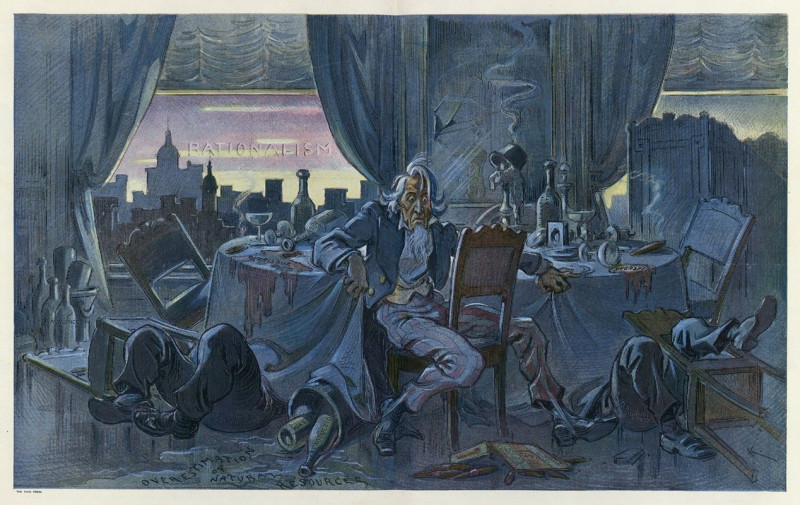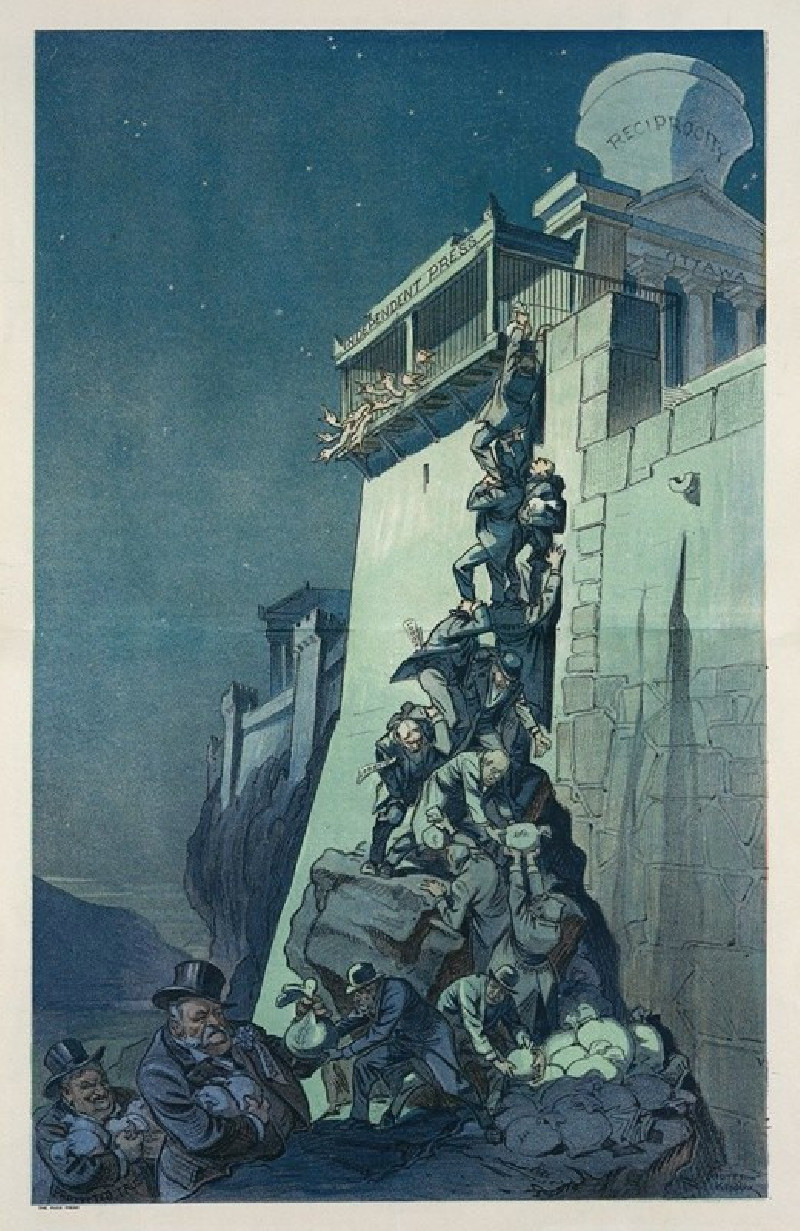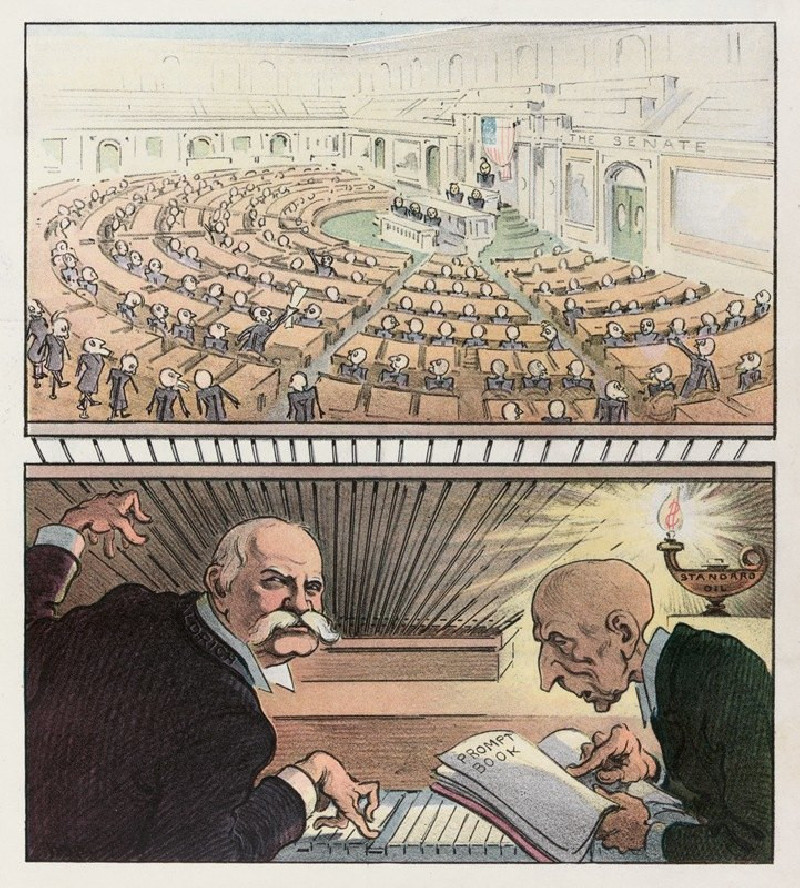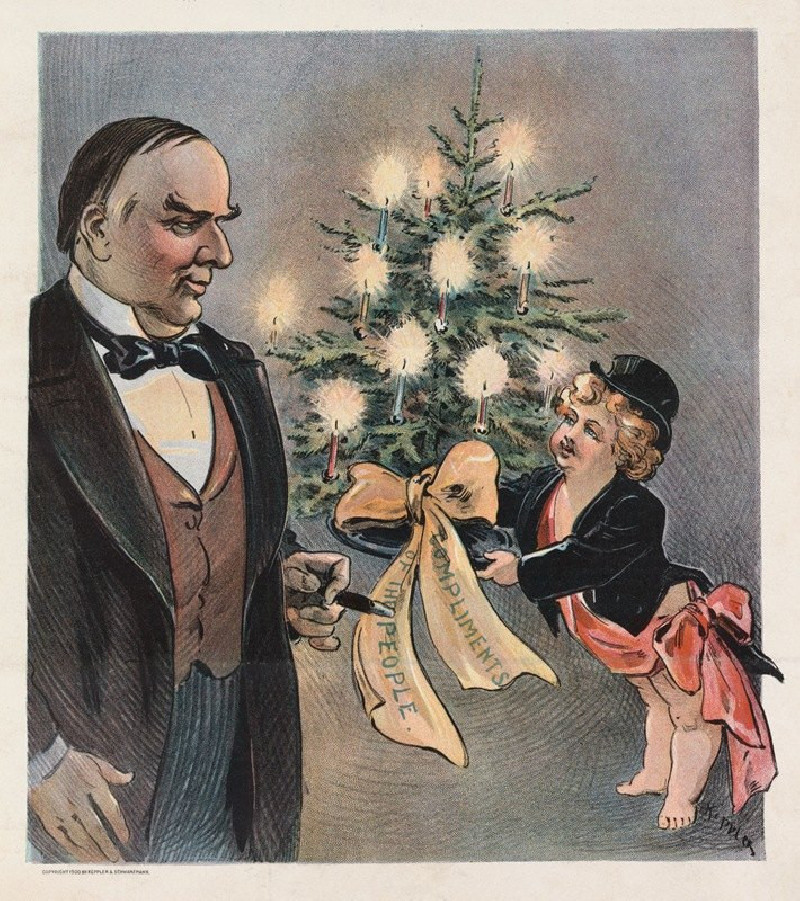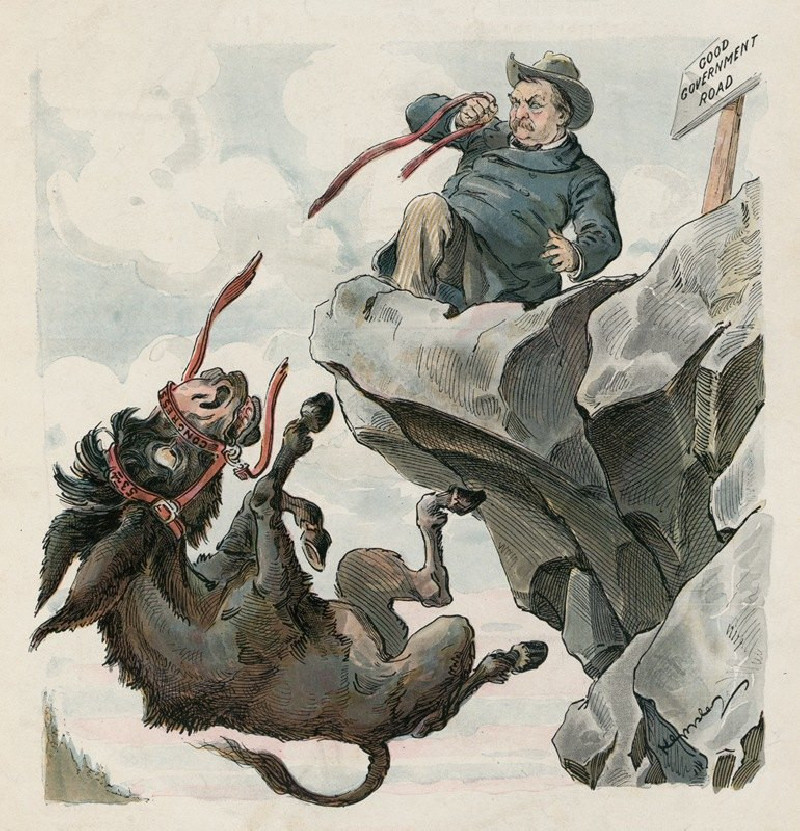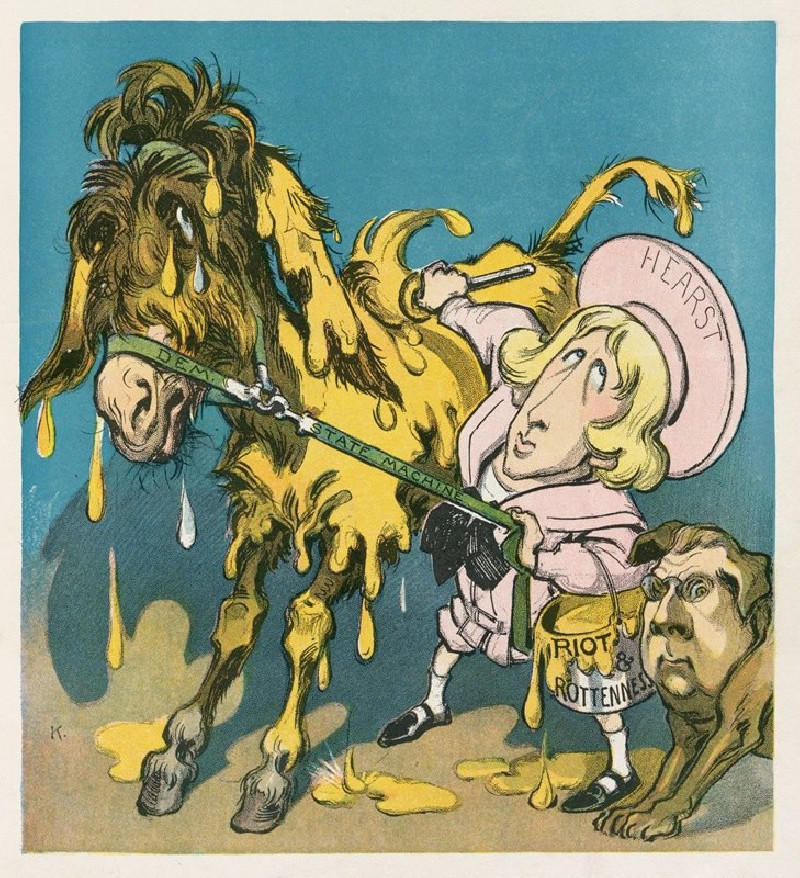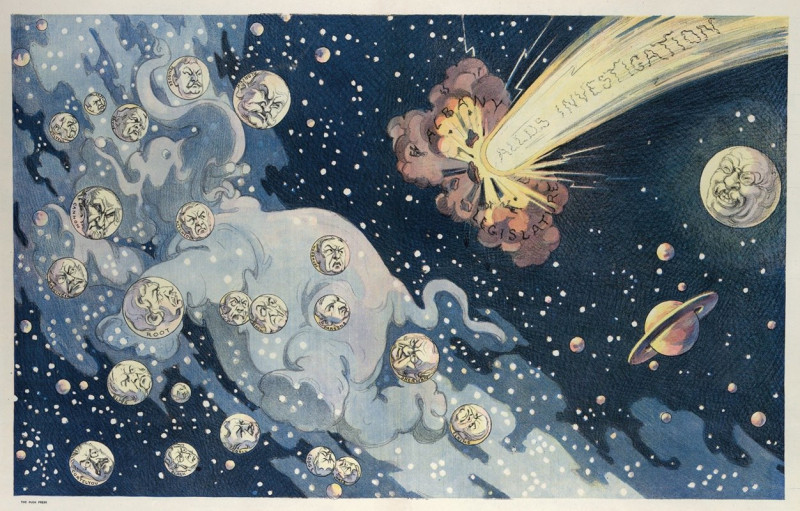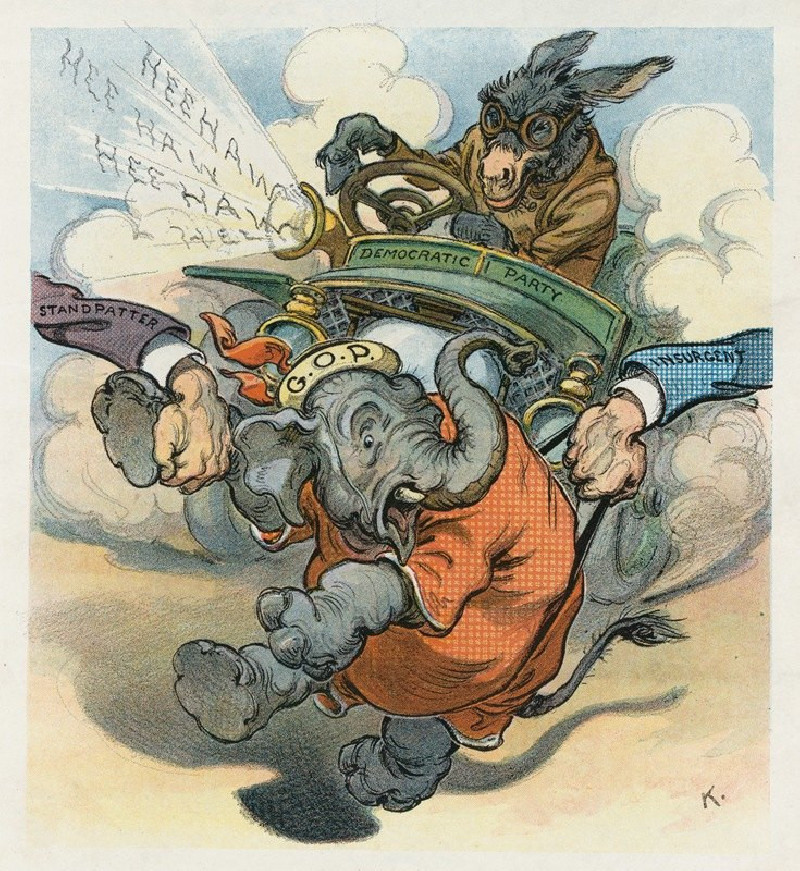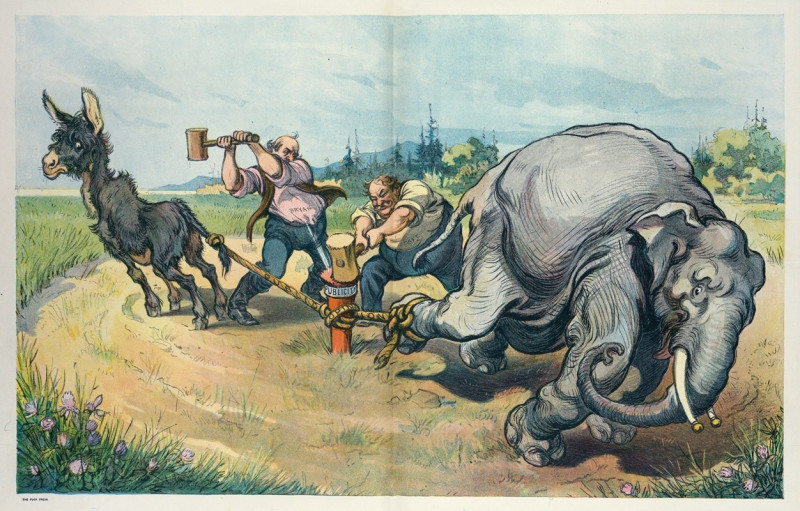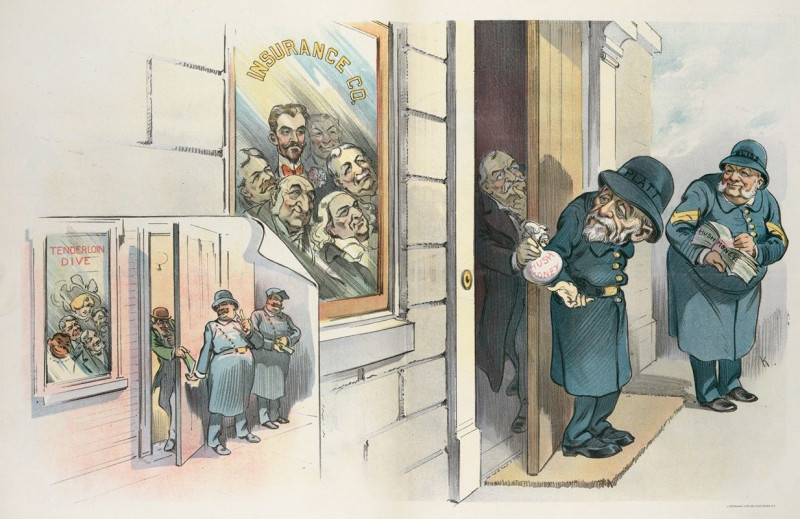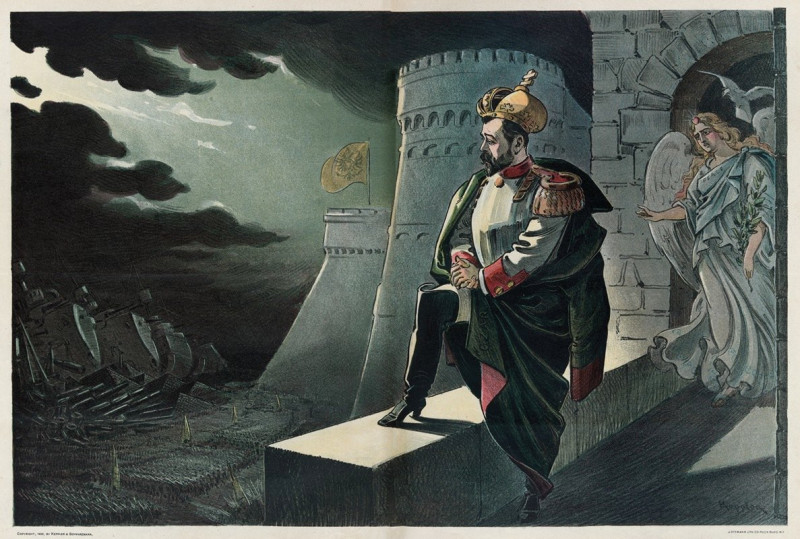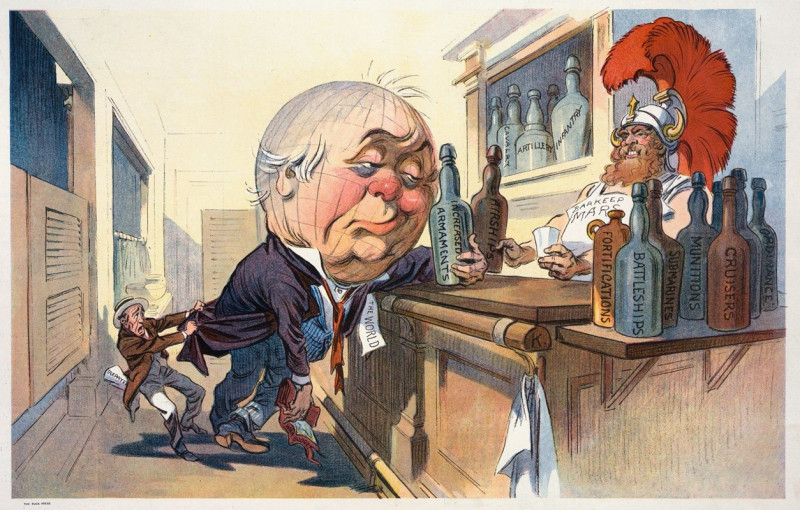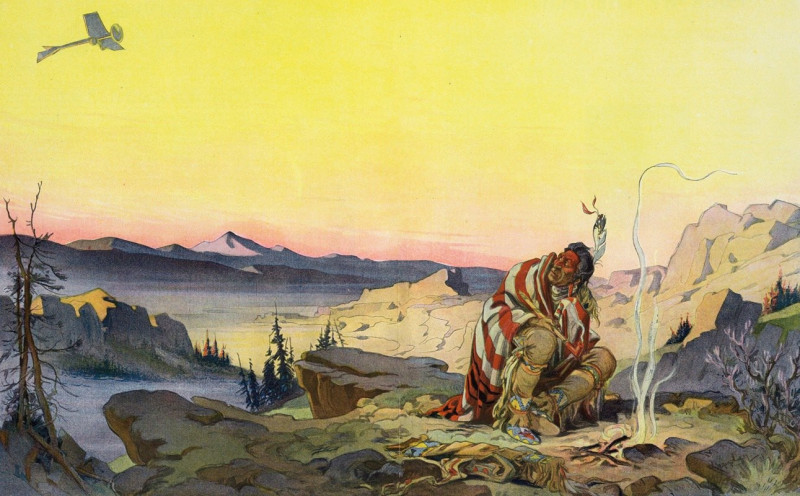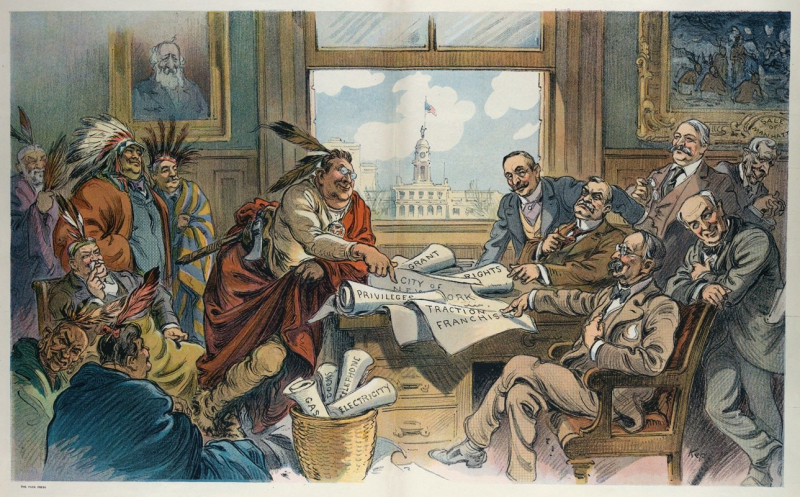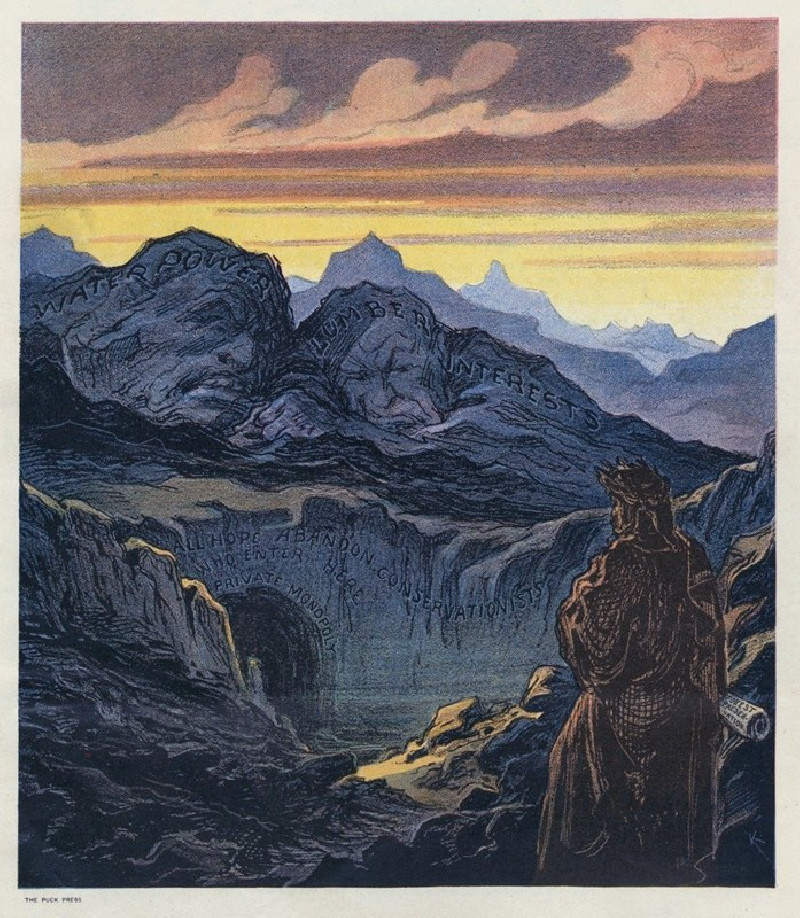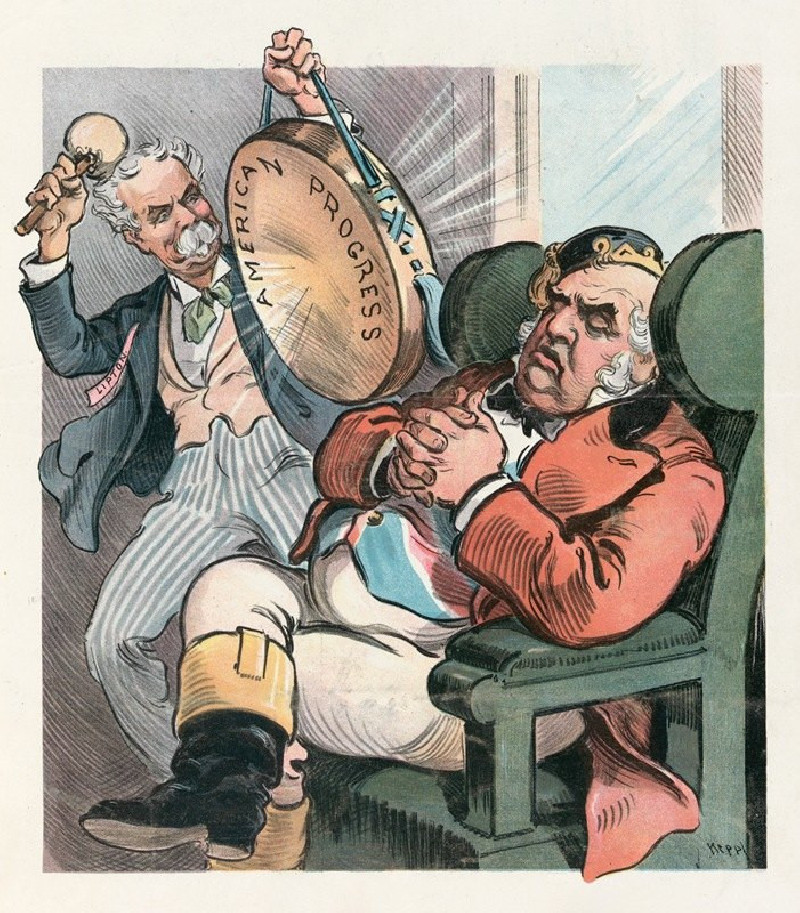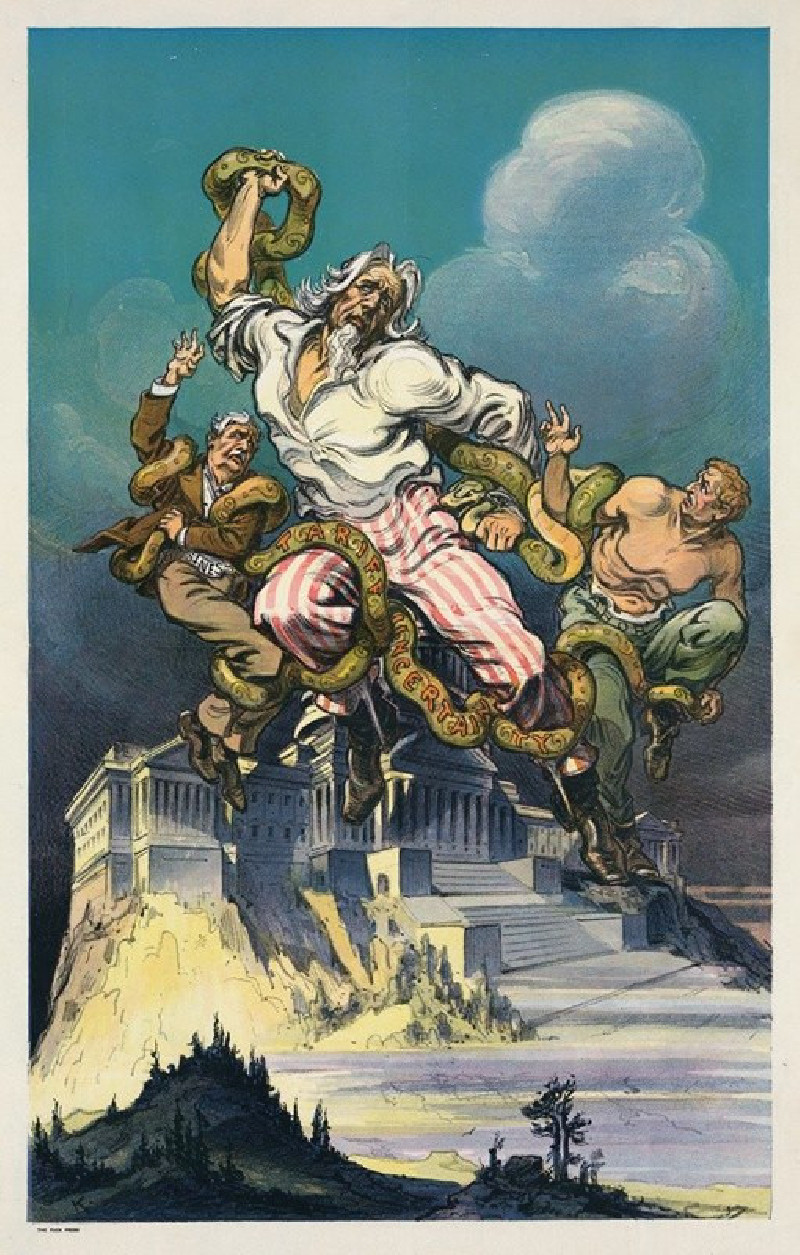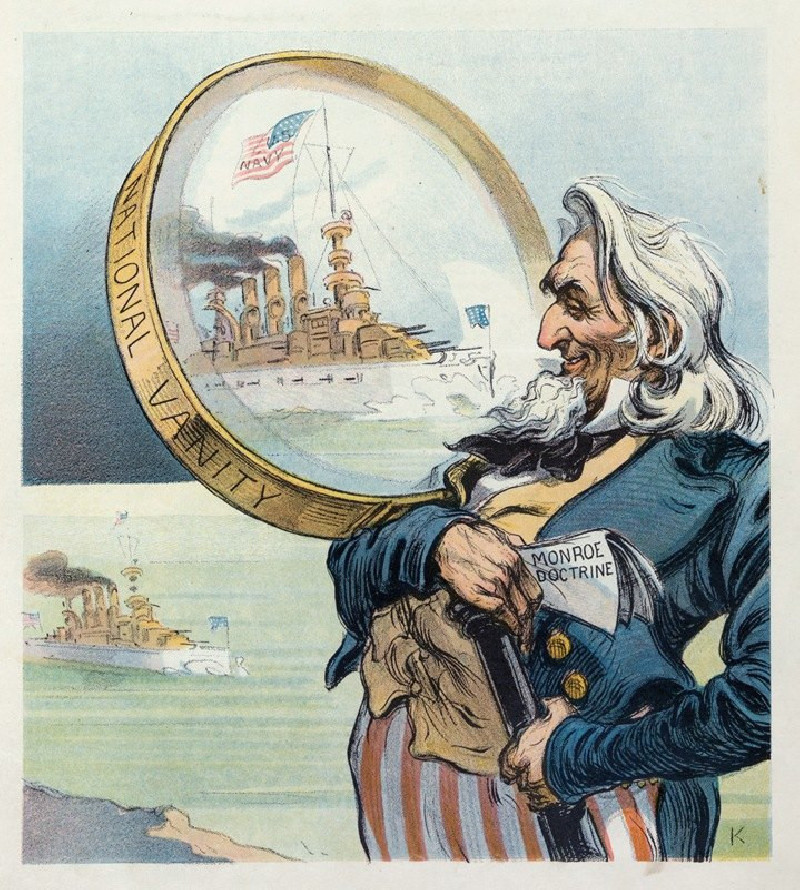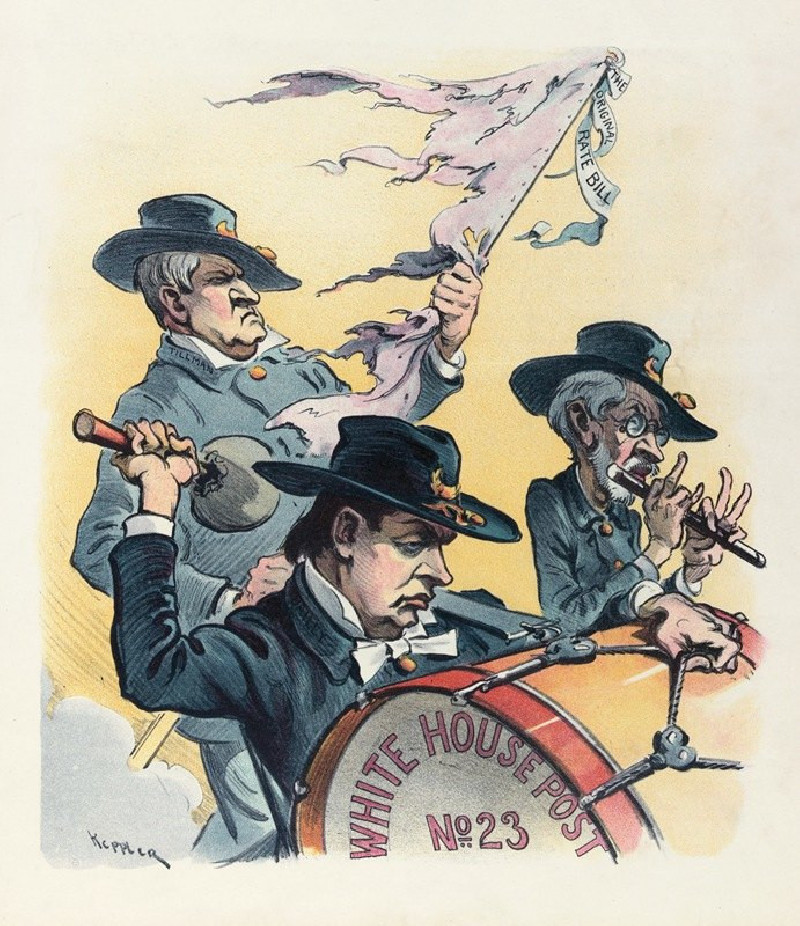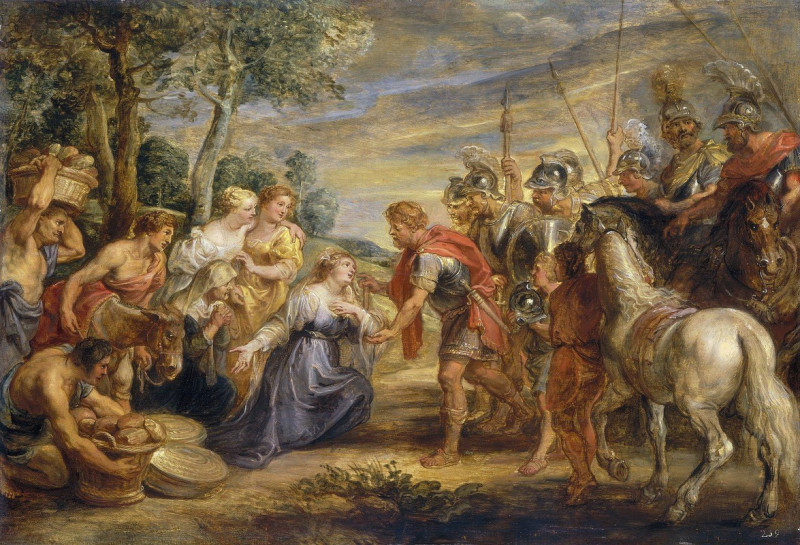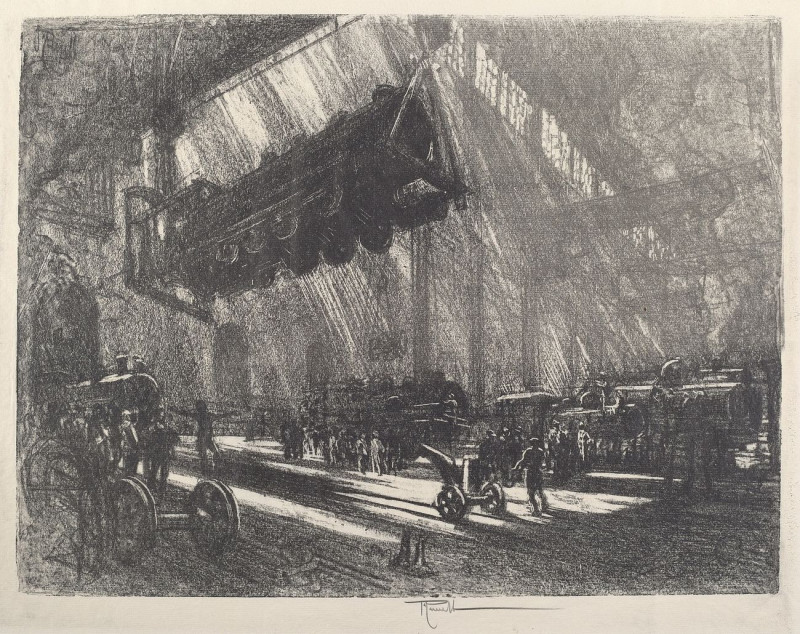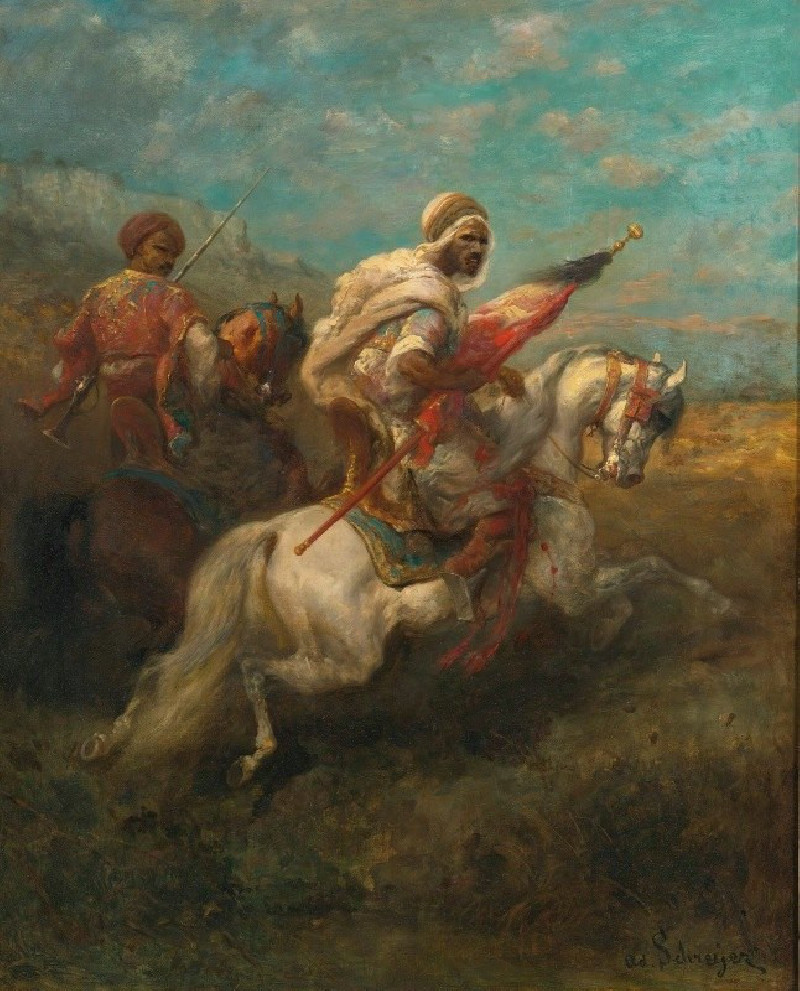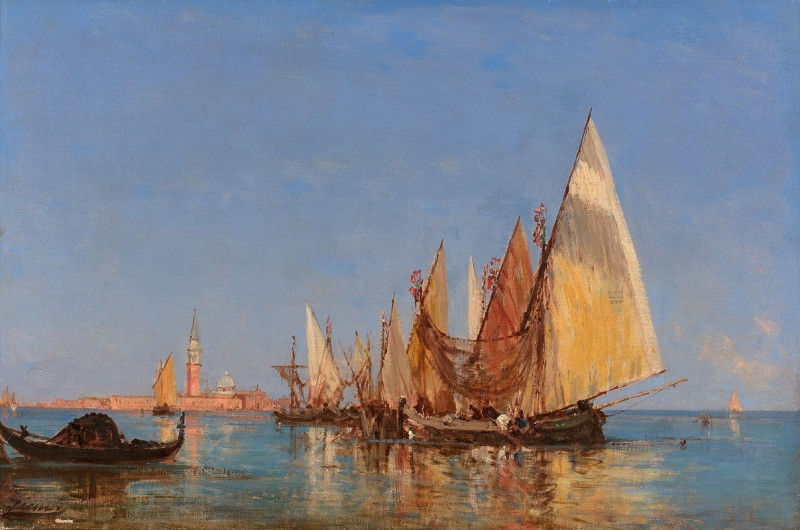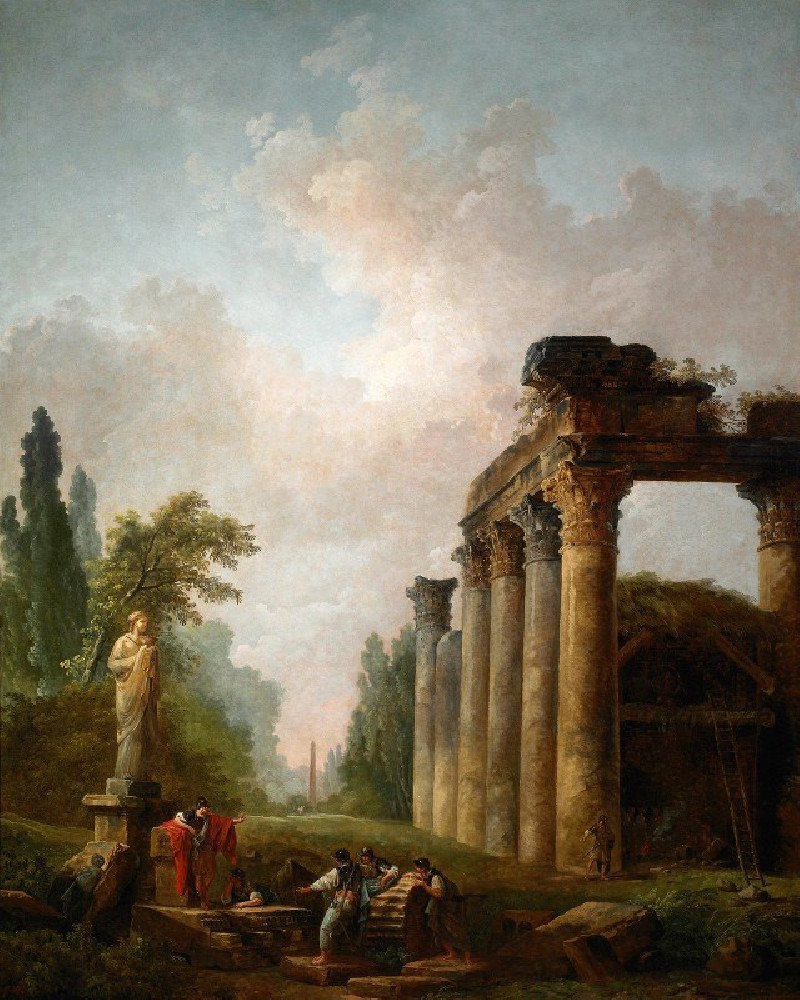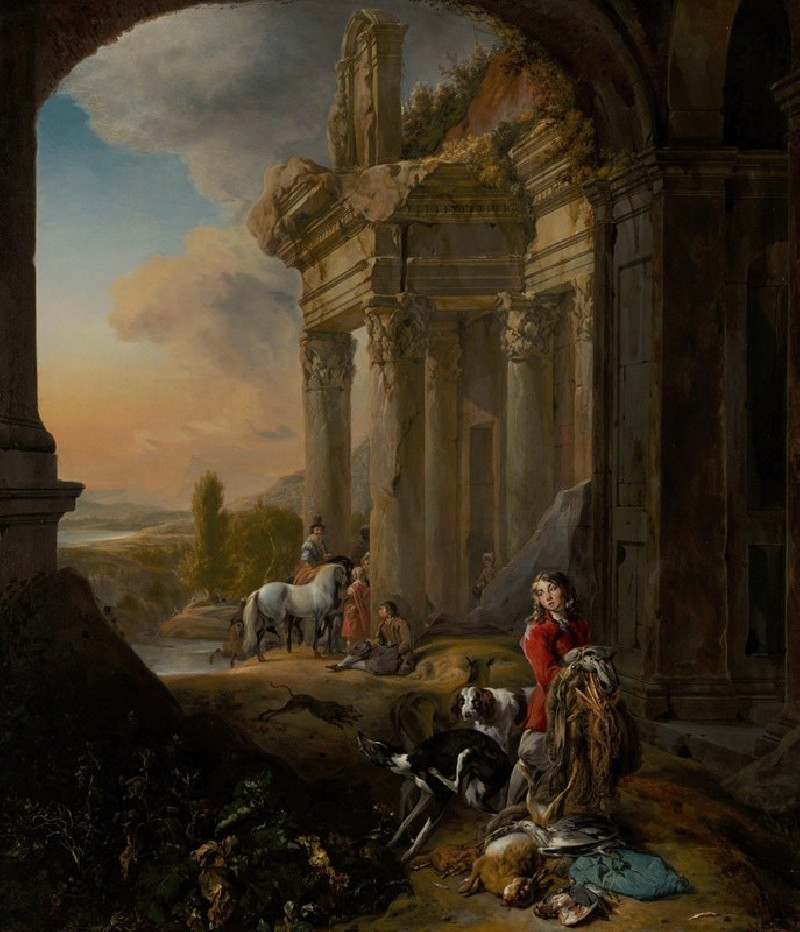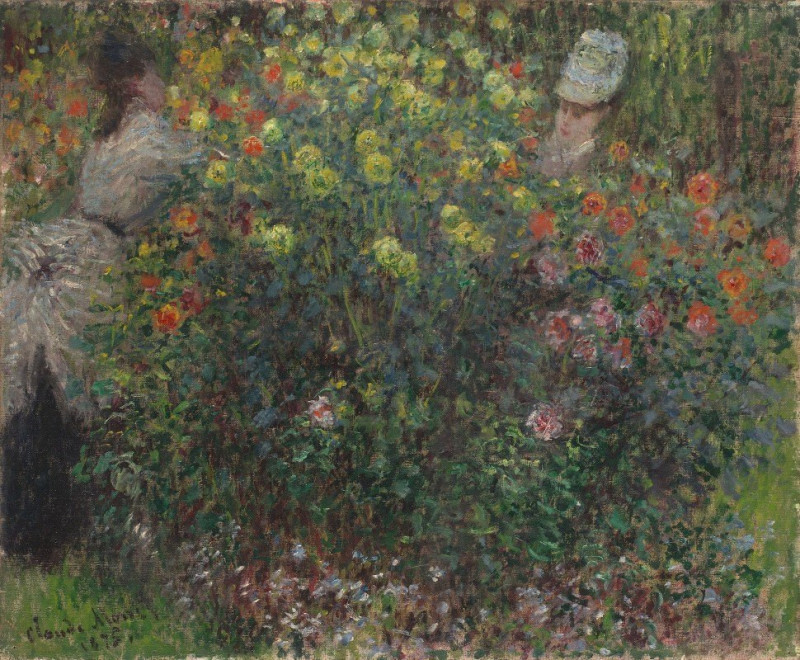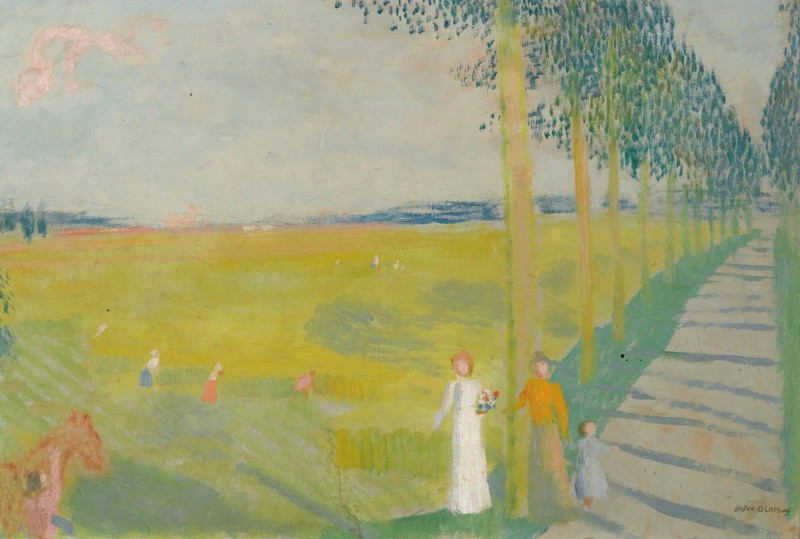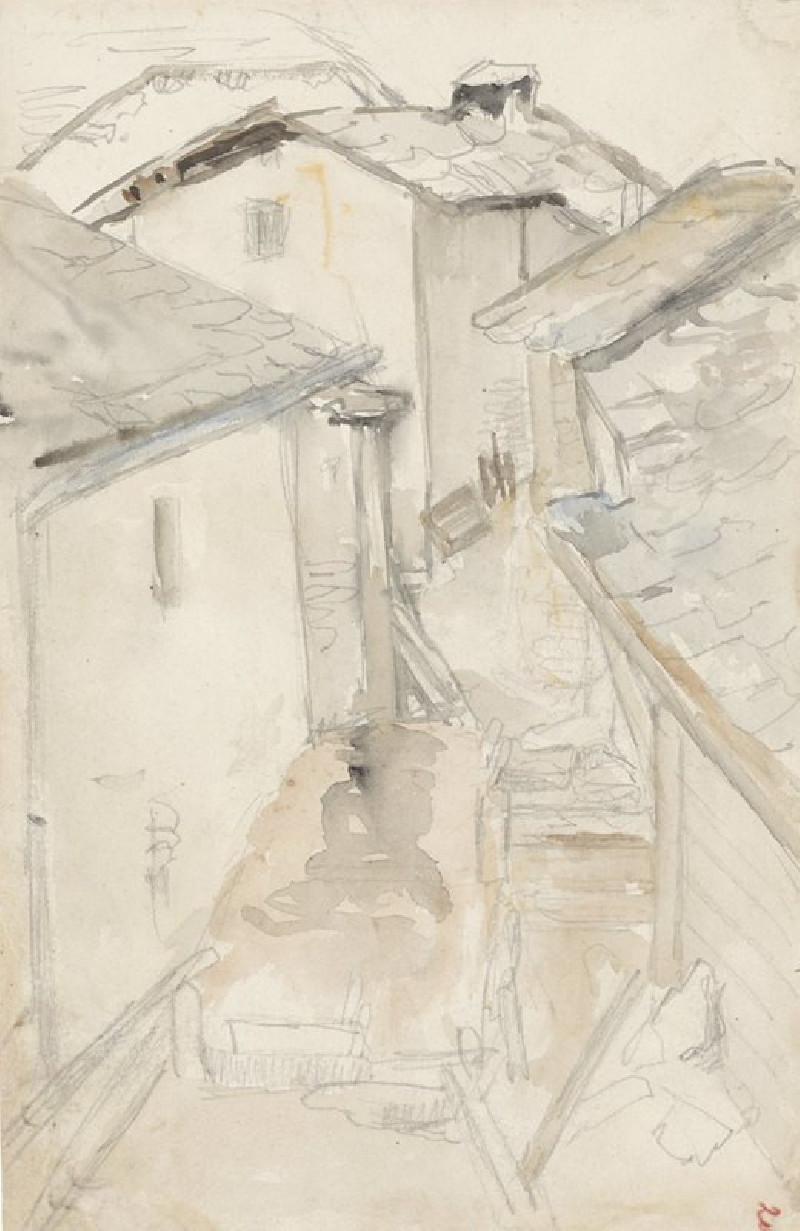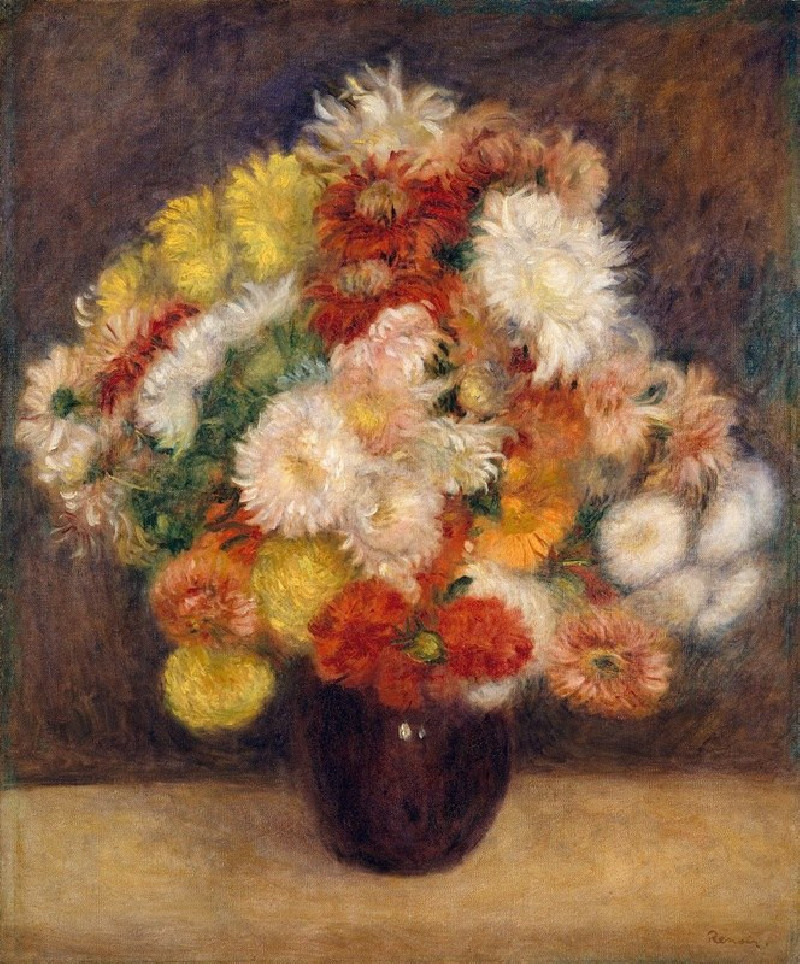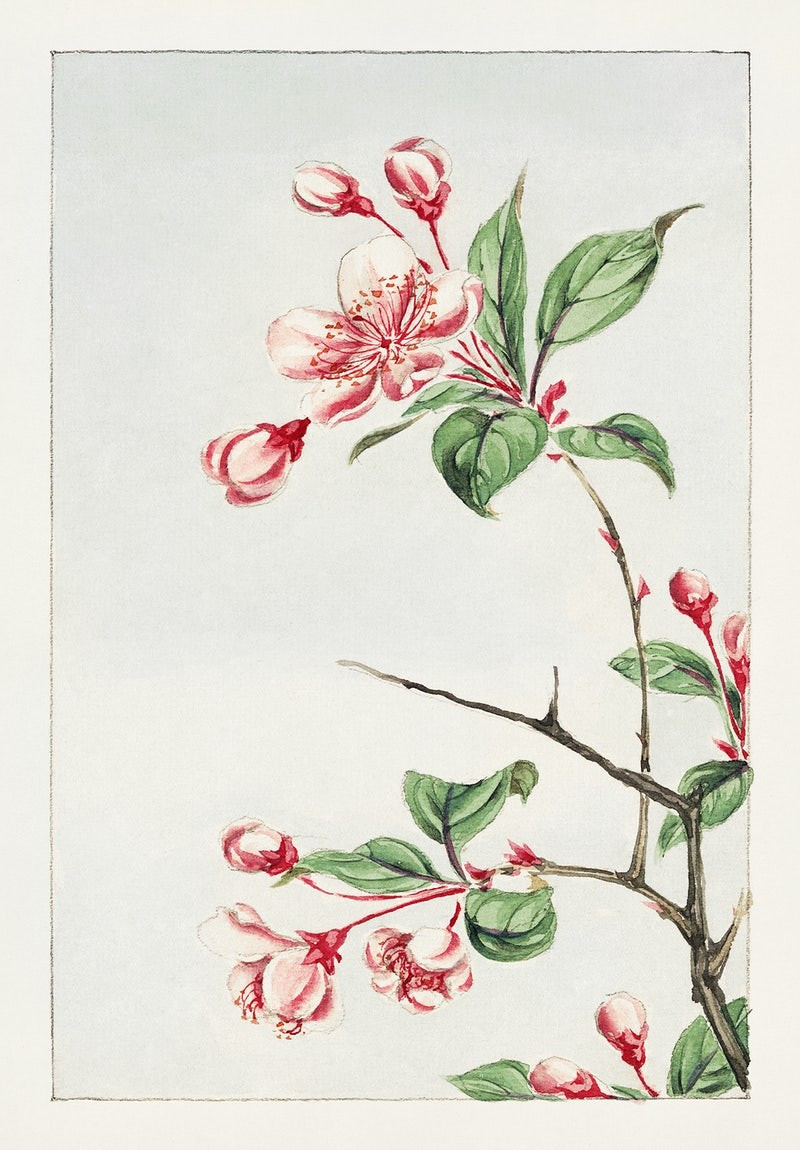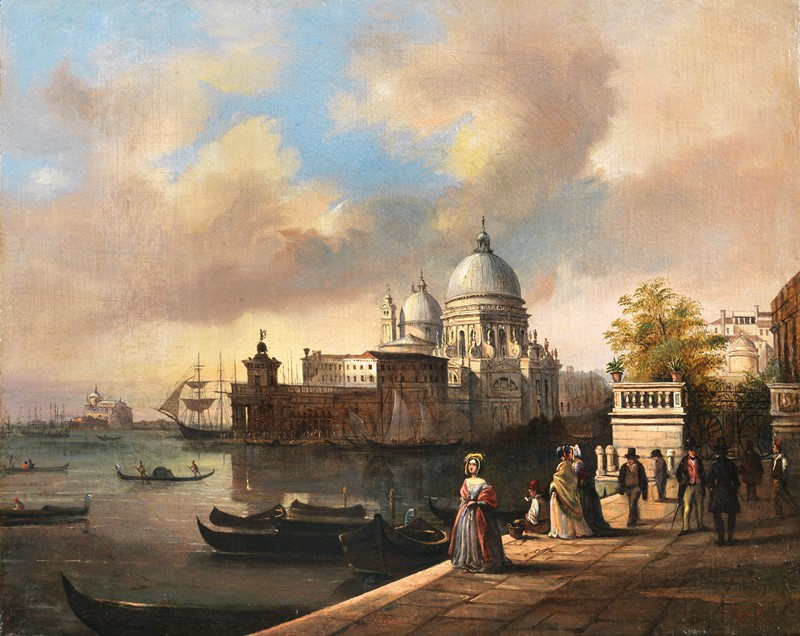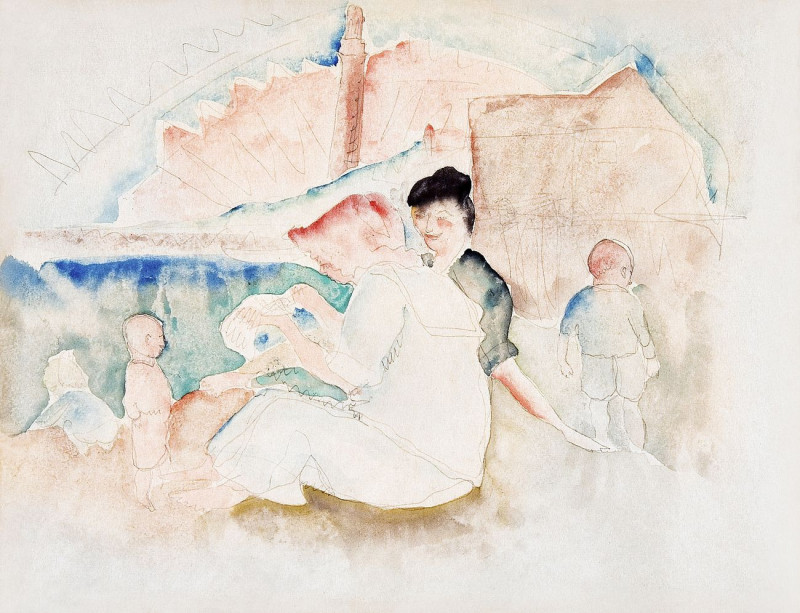The cold gray dawn (1910)
Technique: Giclée quality print
Recommended by our customers
More about this artwork
Udo Keppler's 1910 painting "The Cold Gray Dawn" provides intriguing social commentary wrapped in a dramatic visual narrative. Set in a disheveled, dimly lit room that peeks into a cityscape bathed in the eerie light of dawn, this artwork captures the aftermath of what appears to be a night of intense debate and thought.At the center, an elderly gentleman, perhaps a philosopher or scientist, reclines in his chair, his face etched with worry and exhaustion. His surroundings are a chaotic blend of spilled books, scattered papers, and scientific paraphernalia, telling a story of a fervent search for truth that has perhaps raised more questions than answers.Notable is the array of symbolic references strewn across the room. Labels such as "oversight", "naturalism", "philosophy", "spirit", and "labor", appear on various items, suggesting that the scene depicts a collision of intellectual pursuits. Outside the window, the peaks of an industrial city stand against the dawn, signifying the relentless march of progress.Strikingly, the painting is imbued with a sense of isolation and melancholy, emphasized by the cool, gray tones and the solitary figure amidst a clutter of intellectual endeavors. Udo Keppler captures the philosophical and existential dilemmas faced by those who strive to understand and rationalize the world, even as it continuously evolves beyond the confines of individual comprehension."The Cold Gray Dawn" is not just a portrayal of a moment in time but a reflection on the struggle between human endeavor and the vast, often impersonal forces of progress and change.
Delivery
Returns
Udo J. Keppler, since 1894. known as Joseph Keppler, Jr., was an American political cartoonist, publisher, and Native American advocate. The son of cartoonist Joseph Keppler (1838–1894), who founded Puck magazine, the younger Keppler also contributed to cartoons, and after his father's death became co-owner of the magazine under the name Joseph Keppler. He was also a collector of Native American artifacts.

